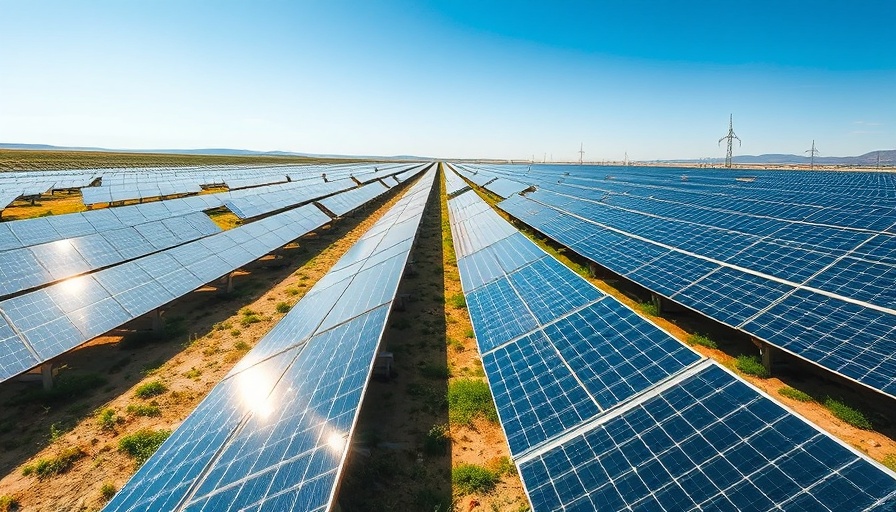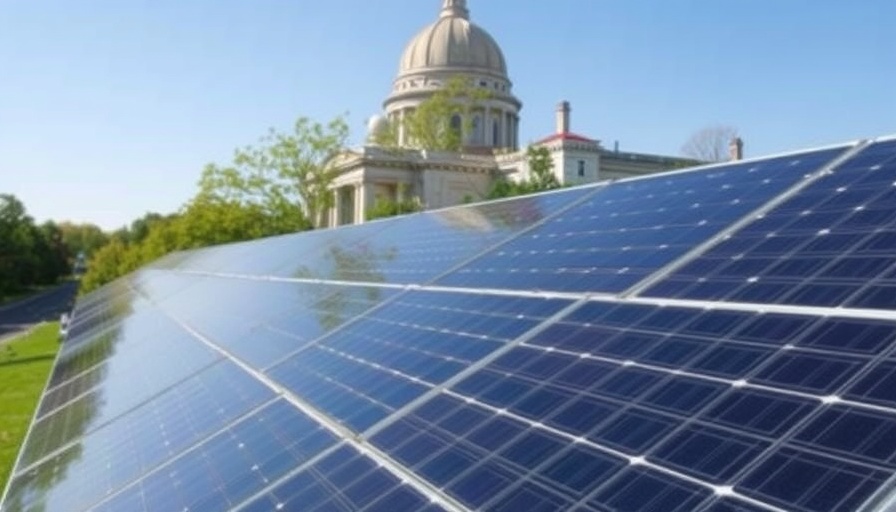
Solar Power's Remarkable Surge in 2024
In a world increasingly powered by renewable energy, the International Energy Agency (IEA) has reported a significant milestone in solar energy generation. The latest findings indicate that global solar power exceeded 2,000 terawatt-hours (TWh) for the first time in 2024, marking a staggering 30% growth from the previous year. This growth, equating to an addition of 475 TWh, reflects the highest annual growth rate since 2017 and underscores the rising importance of solar energy in meeting global electricity demands.
Impacts on Global Electricity Demand
The IEA's Electricity 2025 report highlights that solar power is set to fulfill nearly half of the international electricity demand growth expected to occur up to 2027. This steady increase in electricity consumption, projected at close to 4% annually, aligns with heightened demand across multiple sectors, including industrial operations, air conditioning, and data centers. Importantly, over half of this growth in solar generation is attributed to China, where rapid industrialization and urbanization are driving electricity needs.
Solar’s Position in the Energy Mix
This pivotal increase in solar energy also shifts the global energy landscape considerably. In the European Union, solar generation has outpaced coal, representing over 10% of the electricity generation mix in 2024. The IEA forecasts that this trend will continue, with solar expected to cross the 10% threshold in major markets like the USA and India by 2027.
Future Projections for Renewable Energy
Looking ahead, the IEA suggests a further increase of approximately 1,800 TWh in global solar generation from 2025 to 2027, solidifying solar's status as the second-largest low-emission electricity source, following hydropower. Cohesively, renewables are anticipated to surpass traditional coal-fired generation this year, with coal's share expected to drop below one-third, illustrating a decisive shift towards cleaner energy sources.
Challenges Facing the Energy Transition
Despite these promising figures, the transition to renewable energy is accompanied by challenges that could impede progress. The IEA highlights geopolitical tensions and inconsistent policies as key factors that could jeopardize climate goals. Such obstacles risk negating the significant advances made in renewable energy generation, stressing the need for stable and supportive policy environments to ensure continued growth in solar and other renewable sectors.
The Need for System Resilience
With the increasing reliance on solar energy, understanding potential weaknesses in solar generation becomes critical, as weather conditions can disrupt power supply. Events like winter storms and hurricanes highlighted the existing vulnerabilities within electricity systems in 2024. The IEA stresses the importance of building resilient systems, including adequate dispatchable capacity and long-duration energy storage, to handle such fluctuations.
Conclusion: What This Means for Homeowners and Businesses
As solar energy matures as a pillar of global electricity generation, homeowners and business owners alike have an opportunity to invest in solar solutions, substantially reducing energy costs while contributing to a more sustainable future. This shift not only boosts property value but aligns with the increasing societal demand for eco-friendly energy practices.
For anyone considering solar solutions, be it for personal use or business applications, now is the time to act. As the market continues evolving and scaling, the benefits become clearer and more accessible. Explore your options today to become part of this transformative energy revolution!
 Add Row
Add Row  Add
Add 



 Add Row
Add Row  Add
Add 
Write A Comment